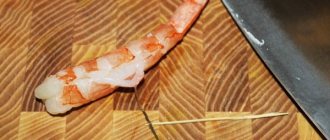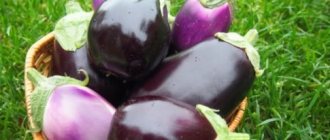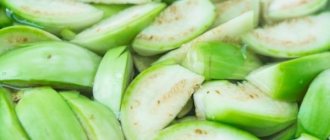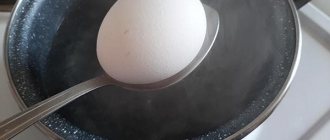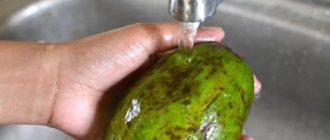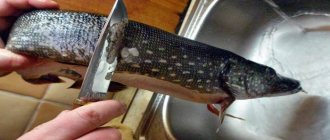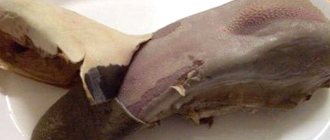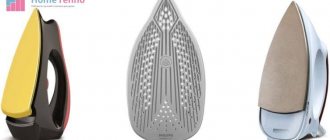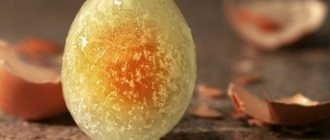Publication in the group: Processing and preparation of products
Chicken hearts consist mainly of muscle tissue and have only 150 kcal per 100 g. They are the basis of first, second and appetizer courses, which are not only satisfying, but also have unique organoleptic qualities, although they are a relatively inexpensive product. Some manufacturers who sell the product in packaging have it initially processed and ready for cooking. However, for use in dietary nutrition and for creating some beautiful dishes, you need to know how to properly clean this offal.
How to clean chicken hearts before cooking
First of all, you should choose the right product. For a high-quality lunch, a chilled semi-finished product is suitable, which must be purchased in specialized departments, stores or at the market, where you need to check the quality certificate. After complete freezing, the structure and color of the meat will change, which will lead to a loss of taste.
It is necessary to clean chicken hearts if you want to get the following dish:
- without excess fat for the diet menu;
- cholesterol-free for people with cardiovascular diseases;
- without blood clots, strands of fibers for the squeamish and entertaining guests.
How to clean chicken hearts before cooking?
The following provides useful tips. There are 3 stages of processing that the housewife must know about in order to properly prepare the offal. It is enough to perform 1 manipulation, or better yet, completely clean the chicken hearts to get a quality lunch.
Heart buster
You should start by preparing the offal. If you bought a frozen semi-finished product, you need to keep it on the bottom shelf of the refrigerator or at room temperature, draining the liquid from the bottom of the dish. You cannot use hot water or a microwave, which can completely ruin the structure of the meat, which will affect the dish. The first step is to rinse the product under running tap, placing it in a colander. Next, you need to sort out the offal.
Particular attention should be paid to the following changes:
- the color of the hearts should be red without dark spots that indicate improper storage;
- the presence of a large amount of dirt;
- dubious growths and plaque on tissue can raise doubts about the health of the bird.
It is necessary to throw aside damaged chicken hearts and foreign particles that are not suitable for consumption. Often you can see pieces of the stomach or liver on the product. They need to be removed and cooked separately, since the heat treatment will be different. During sorting, thread-like fibers with a length of 5 cm to 8 cm should be removed. They create inconvenience when consuming the finished dish.
Fat removal
It is necessary to clean chicken hearts from fat for proper dietary nutrition. You should know that only in farm products there is a lot of it, because such birds are less mobile. The unnecessary part must be carefully removed with scissors or a sharp knife, being careful not to touch the muscle tissue.
Thus, it will be possible to rid the semi-finished product of harmful cholesterol and excess calories.
Removal of blood clots and large vessels
People who do not disdain blood vessels and blood need to carry out additional cleaning of excess in chicken hearts. Dark burgundy, almost black clots are not present in every specimen; they are easy to notice under the pink muscle tissue.
There are several ways to help get rid of them:
- the blood will liquefy and come out on its own when the chicken hearts are soaked in a cup of warm water;
- just press on each specimen;
- For the most demanding or some recipes, it is necessary to cut the offal into 2 equal parts and rinse thoroughly again in cold water.
After complete individual processing, you can store the prepared product for no more than a day in the refrigerator. Pre-boiling will increase shelf life.
Reviews and advice from experienced housewives
In principle, it’s not necessary, but cutting it into a butterfly and rinsing it to remove blood clots doesn’t hurt. Especially if you consider how and where they are stored until they reach your table. And blood clots are the first place for all sorts of bad things to multiply and the product begins to deteriorate from them. And the fat should not be trimmed - it gives juiciness and is not harmful to health.
Tata Mudraya
https://otvet.mail.ru/question/177798773
I just soak it in cold water for an hour and rinse. I let it drain in a colander. Well, I cut it off if there are “open” rags hanging there (remnants of arteries). I usually cook at least 2 kg. And it tastes better with fat, I don’t see the point in cutting it off.
Galka Galkina
https://otvet.mail.ru/question/177798773
If they are good, then there is no need to clean them. If it’s not very good (there are blood clots, blood vessels, etc.), then you need to clean it of blood vessels and fat, keep it in water so that the excess blood comes out.
Anonymous
https://eva.ru/beauty/messages-3180425.htm
it is necessary to clean, trim if there are remaining vessels and excess fat, if the recipe requires cutting, then rinse each half from blood clots, then dry thoroughly on a paper towel, if you do not need to cut, then press on each heart with your fingers to squeeze out blood clots out of him.
TAIGA
https://eva.ru/beauty/messages-3180425.htm
I never clean anything, I just rinse it thoroughly, then put it in a saucepan, add water to cover and simmer for two hours, at the end I add sour cream and garlic. Grandma's recipe
I won't give up without a fight
https://eva.ru/beauty/messages-3180425.htm
How and how much to cook so that they are soft
To make a dish of chicken hearts appetizing and tasty, you need to know how to cook them correctly.
This will help you prepare a high-quality dish and, in some cases, reduce the time you spend in the kitchen:
- Peel the chicken hearts and then soak them in water, or preferably milk, to soften the fibers and remove bitterness. This will take approximately 30 minutes.
- The chilled offal will be juicier than the frozen semi-finished product.
- According to the classic recipe, you need to boil the giblets for 10 minutes, and then change the liquid and bring it to readiness with seasonings and vegetables.
- Add salt only 10 minutes before. until the end of boiling.
- More time will be spent on offal from poultry.
- For salads and main courses, you can replace water with milk. At the same time, softness can be achieved within 15 minutes. earlier.
- For soup or further stewing, frying, you can reduce the boiling time by 2 times.
Housewives use different kitchen utensils and equipment to prepare chicken hearts. The table below will help you navigate in order to avoid mistakes.
It is worth considering that the time indicated is for a medium-sized offal:
| Type of heat treatment | Ready time |
| In a saucepan | 40 min. after boiling |
| In a slow cooker | in the “Extinguishing” mode for 50 minutes. |
| In a pressure cooker | in “Meat” mode 40 min. |
| For a couple | 1 kg will take 1.5 hours, and 500 g will take 1 hour. |
For a child, increase the cooking time by 15 minutes.
Step-by-step recipe for cooking fried hearts with onions in a frying pan
Chicken hearts: how to cook deliciously so that they are soft?
The first recipe is the easiest to prepare. And here I’ll tell you how to properly clean chicken offal from film and excess vessels. I will not describe this process any further. Therefore, in subsequent versions, you can come back here and just remember how it’s done.
We need:
- Chilled chicken hearts - 800-900 g;
- Onions - 2 large pieces;
- Vegetable oil - 4-5 tablespoons;
- Salt and pepper - to taste.
Preparation:
1. Not always, but on some offal there is a film. It can be easily removed with a sharp knife. And from the thick part of the heart we cut off the excess fat and veins.
2. At the top of each heart we make 2 longitudinal cuts. There are blood vessels there. Let's clean out some of the stagnant blood with our fingers, and rinse the rest under water.
3. The next step is to wash each giblet under the tap. To do this, take a colander and place all the meat there.
4. All excess blood will drain. Leave the hearts in a colander for a few minutes to drain the water. You can leave it in the sink or place a water dish underneath it.
5. Peel the onions and turnips. Cut it into quarter rings on a kitchen board.
6. Place a wide frying pan with a thick bottom on the fire. Pour oil into the bottom and heat it up. Place the chopped onion.
7. We don’t waste time and put our hearts in the pan. Add salt and ground black pepper to taste. These spices are enough for a simple recipe.
8. Cover with a lid and simmer for 25 minutes over medium heat.
9. After 25-30 minutes, fry the food for 5-7 minutes with the lid open over high heat. During this time, excess moisture will evaporate.
Serve the finished dish hot to the table. As a side dish, you can boil potatoes with dill or boiled buckwheat porridge with butter.
Fragrant and tender chicken hearts are tempting to eat. Bon appetit!
Tips for preparing the product for salad, stewing, barbecue
There are a few tips from the pros that come in handy for some dishes to make the cooking process easier. Peeling chicken hearts is necessary for any dietary menu and aesthetic appearance on the holiday table. The offal can be quickly boiled into a salad if it is cut into strips or cubes. Cooks also use this grinding for stewing in order to eliminate preliminary boiling from the process. In this case, it is necessary to cook over low heat under a lid, adding any fermented milk product, soy sauce or tomato paste.
For barbecue, chicken hearts should be marinated for at least 2 hours before cooking, which will soften the coarse fibers.
The following products are suitable for this:
- fat sour cream or kefir;
- sparkling mineral water and beer;
- soy sauce;
- citrus juice.
You need to know that it is always better to add onions and a set of seasonings that the family loves most in order to give the dish more aroma and taste.
Step-by-step recipe for chicken heart chops
Chicken thighs in a frying pan: how to properly and tasty fry thighs
Perhaps this recipe will be a revelation for someone. Chops from chicken hearts turn out tender, tasty, no worse than from meat. They can be served as a main course with a side dish or as an appetizer with beer.
Required Products:
- chicken hearts - 650 gr.
- eggs - 4-5 pcs.
- flour - 150−200 gr.
- salt, pepper, other spices to taste
- vegetable oil (for frying)
Prepare according to the recipe:
- To begin with, chicken hearts must be properly prepared. They need to be washed, fat and blood vessels trimmed. Cut each heart lengthwise, open it, clean out blood clots, if any.
- Place the processed giblets on a board, cover with cling film, and beat them with a hammer on both sides. Then add salt and pepper.
- Pour flour into one bowl. In another bowl, break the eggs, salt, pepper, and add your favorite spices. Lightly beat the eggs with a fork.
- Pour vegetable oil into a frying pan and heat it up. Take a chicken heart, dip it in the egg, roll in flour, then dip it in the egg again. Place in hot oil.
- Fry first on one side until golden brown. Next, turn over to the other side, cover with a lid, and hold for a couple of minutes under the lid over low heat. Remove the lid, turn over again, and fry until crispy.
How to cook deliciously
You can cook delicious chicken hearts if you adhere to the following rules:
- Choose your product carefully when purchasing.
- Prepare well and rinse before use.
- The giblets will be soft if the cooking time is observed.
- Among the seasonings you can highlight ground ginger, which goes well with the taste of the offal.
- For frying, it is better to add 2 types of oil to the pan: butter and lean. This is how the hearts will turn out soft and juicy.
- The chefs advise you to try wonderful hearty soups, recipes for which are not only in the diet menu. Fresh herbs and sour cream are often used for serving.
- Don't be lazy about cleaning chicken hearts. Then many household members and guests who had a negative attitude towards offal may change their minds.
There are many dishes that can be prepared with this nutritious and tasty product. Therefore, chicken hearts as an independent product or ingredient in culinary dishes are popular with many chefs from all over the world.
For omnivores
In fact, the hearts you buy in the store have already been processed, and absolutely everything you see is edible. A couple of uncut vessels or a blood clot will not harm you, but it may slightly undermine the aesthetics of the finished dish.
So what should you do if you want to get maximum results with minimum effort?
- First, rinse the hearts thoroughly (however, this advice is valid for any meat).
- There is no need to clean the hearts from a thin film that you can hardly notice, but you do need to sort through the chicken hearts: often in the mass you come across other offal, both suitable and unsuitable for consumption. Even if you find a piece of liver or gizzard, you should not cook them together with hearts, since the cooking time for these products is different.
- As you sort the product, remove long strands of fibers, which sometimes stretch 5-8 centimeters. Again, there's nothing harmful about them, but they can make the finished dish quite awkward to eat.
Delicious recipe! Puff pastries with mushrooms and cheese
In the finished dish, blood clots are practically undetectable, and some even believe that they add piquancy to the dish and simply refuse to remove them of their own free will.
For those losing weight
Chicken hearts could be called a dietary dish if they belonged to backyard chickens that have access to physical activity. The products you find in the store certainly cannot boast of low fat content, since the conditions in which chickens are kept in poultry farms contribute to the formation of significant fat deposits.
So what do you do if you're on a diet and don't want all that fat in the pan?
- First, you need to repeat all the manipulations that we described in the section above: rinse and sort the chicken hearts, clearing them of thread-like fibers.
- Now let's add one more step: you will have to trim the fat from each heart. Yes, the process is quite painstaking, but reducing fat in the diet is worth it. Try not to touch the muscular part: if you decide to clean the chicken hearts from fat, then it can already amount to up to a fifth of the weight of the purchase.
Not all chicken hearts are covered in so much fat that it needs to be trimmed off. If you want to completely remove fat from the product, you will spend an unreasonably large amount of effort and, most likely, cut off some muscle tissue, reducing the weight of the finished dish by at least a quarter.
What needs to be done
To get a tasty, tender and nutritious dish of chicken hearts, first of all, you need to choose a quality product at the market or in a store.
Frozen hearts need to be thawed gradually
Hearts should have a smooth, shiny surface of a uniform dark red color, without light or dark spots. Fresh chilled hearts are considered the best option, but frozen ones can be just as good if they have not been frozen several times. Frozen product may have a slightly firmer texture after cooking.
It is important to defrost frozen hearts in a gentle way by placing them in the refrigerator and draining the water as it accumulates (aggressive defrosting in water or in the microwave can negatively affect the taste and consistency of the product). Then do the following for initial cleaning:
- Sort through the hearts, sifting out pieces of other offal and other foreign components, if any.
- Soak the hearts in cold water for 30–60 minutes.
- Rinse thoroughly and drain the water.
After the hearts have stood in cold water, they need to be rinsed - Drain in a colander and let the water drain completely.
This required minimum of preparation work has been completed. Now the hearts can be boiled, stewed, baked in this form, or subjected to further more thorough cleaning.
Delicious recipe! Dessert with kiwi and banana
Thorough Cleaning Instructions
To get the most “clean” product, consisting only of muscle mass, you will need to remove fat and film, possible fragments of blood vessels, and blood clots. Perform the following manipulations:
- Use a knife to pry up the thin film (thread-like fibers) and cut it off.
- Trim away any clumps of fat and blood vessels at the “base” of the heart.
After removing fat, the weight of the product is significantly reduced - If there are blood clots in the hearts, press on them and they will come out of the tissue.
- Cut each heart in half and clean out the inside.
The most thorough cleaning of chicken hearts is done both outside and inside.
Please note that after processing the hearts in this way, the volume and weight of the product will decrease significantly.
Chicken liver pate. User Tillotam's blog on 7ya.ru
I already talked about a sandwich with duck pate, but it turned out to be some kind of tricky recipe with baking. Over the past time, the recipe has been adapted and completely adapted to our breakfast in a much simpler and even improved version. It should be noted that before, no one in the house except me ate liver, but everyone condescended to the pate, even my daughter, who is a terrible picky eater. You can take chicken liver, you can take duck liver, you can take it in half. We take 2-3 onions on a standard liver tray...
Discussion
I fry it with onions and carrots and spices, then grind it in a meat grinder. I'll take note about the cream. Thank you
I finely chop the mushrooms, fry them and put them into pate - very tasty. Sometimes I add paprika.
Ahhh... and the chicken liver pate needs to be well peppered.
Three stages of offal cleaning
The purchased offal is already ready for consumption. But it should at least be thoroughly rinsed under running water and lightly dried in a colander. True, real gourmets and lovers of this component recommend using at least one of the following stages of subsequent processing. Or better yet, all three. This will allow you to get the most pleasant dish in terms of taste and culinary aesthetics.
Chicken hearts are covered with a very thin film, which many housewives try to remove. There is no need to do this; as a result of heat treatment, it is transformed into a completely edible substance. It is better to sort out the product, because... Even in store-bought preparations, other components are found among the hearts. Pieces of ventricles or liver should be removed, because they can ruin the final dish. At the same stage, threads of fibers, the length of which sometimes reaches 8 cm, should be removed. They will not cause harm, but they can complicate the process of eating food.
At the final stage, chicken hearts get rid of blood clots and large vessels. This is not a necessary step, but it will result in the most attractive product with a clean taste. There are usually few vessels, and black clots are clearly visible on the surface of the products, so the procedure will not take much time.
The by-product is almost ready for further processing. All that remains is to rinse it thoroughly again and cut it as required by the recipe. Often, even this is not required, especially when the chicken hearts are going to be boiled or minced. Although, some pedants necessarily cut the components in half and also clean them from the inside.
Those who have never cooked chicken hearts often doubt that they will be able to prepare the product correctly: it looks suspicious on the substrate, and it is not entirely clear which way to approach its preparation. What should stay in the trash and what should go in the frying pan – that’s what we’ll tell you about in this article.
